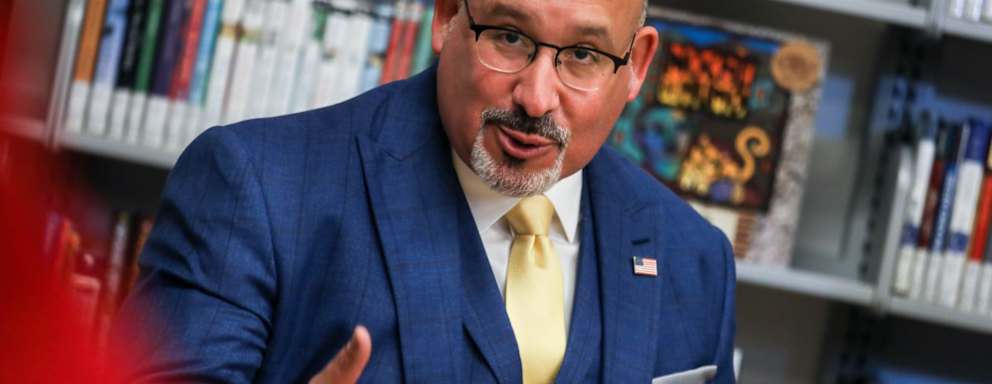Biden Admin Expands Student Debt Forgiveness for Some Borrowers
 Credit: Jay L. Clendenin / Contributor / Los Angeles Times / Getty Images
Credit: Jay L. Clendenin / Contributor / Los Angeles Times / Getty Images- Income-driven repayment (IDR) plans make student loans more affordable for low- and middle-income borrowers.
- Under the new policy, more students on IDR plans may be eligible for loan forgiveness — and sooner.
- Up to now, very few students on IDR plans have been eligible for loan forgiveness.
The Department of Education (ED) is working to expand student debt forgiveness under income-driven repayment (IDR) plans.
The department announced April 19, 2022, that it will retroactively count time spent in long-term forbearance as qualifying payments. This move is expected to help 3.6 million borrowers who were steered into forbearance by loan servicers get at least three years closer to their loans being discharged.
The change automatically helps those on forbearance for at least 12 consecutive months or 36 cumulative months.
Additionally, ED promised to conduct a one-time revision of IDR payments for all Direct Student Loans and Federal Family Education Loan Program (FFEL) loans. Any months that borrowers made payments, regardless of the type of plan, will now count toward forgiveness, even before loan consolidation. The fix is meant to correct for “past implementation inaccuracies,” ED said in a statement.
All retroactive counting will occur automatically, the department stated.
ED announced in March 2023 that borrowers with FFEL, Perkins, or Health Education Assistance Loan (HEAL) Program loans have until the end of 2023 to consolidate into the Direct Loan program to qualify for the adjustment. The initial deadline to consolidate was May 1, 2023.
“Under IDR plans, borrowers are eligible for forgiveness, no matter how much debt remains, after 20-25 years of qualifying payments. However, forgiveness has eluded most.”
IDR plans are intended to make repaying student loans more affordable for low- and middle-income borrowers. Depending on the plan, monthly payments are based on discretionary income or other factors. Borrowers are eligible for forgiveness, no matter how much debt remains, after 20-25 years of qualifying payments.
However, forgiveness has eluded most.
A report from the U.S. Government Accountability Office found that, as of June 1, 2021, ED approved forgiveness of 157 loans. That’s despite the agency finding that about 7,700 loans in repayment could potentially be eligible for forgiveness.
“Student loans were never meant to be a life sentence, but it’s certainly felt that way for borrowers locked out of debt relief they’re eligible for,” Secretary of Education Miguel Cardona said in a statement. “Today, the Department of Education will begin to remedy years of administrative failures that effectively denied the promise of loan forgiveness to certain borrowers enrolled in IDR plans.”
ED added that it will increase its oversight over loan servicers to prevent future widespread forbearance steering. It also pledged to improve its payment tracking toward IDR forgiveness and make that counter easily visible to borrowers on the Federal Student Aid website.
The changes are similar to those proposed by advocacy groups in January 2022. Organizations including the Student Borrower Protection Center, the Center for Responsible Lending, and the National Consumer Law Center outlined a temporary waiver for IDR forgiveness similar to the waiver for the public service loan forgiveness (PSLF) program.
Former U.S. House Committee on Education and Labor Chairman Robert Scott and U.S. Senate Committee on Health, Education, Labor, and Pensions Chair Patty Murray penned a letter to Cardona on April 15 requesting similar changes.
Scott and Murray’s letter went further than just this IDR waiver. The lawmakers also called on ED to fast-track the process of implementing a new IDR plan before student loan payments resume in August.
Currently, there are four IDR plans a borrower can choose from. ED began the negotiated rulemaking process in late 2021 to create a new, more comprehensive plan. The department released the details of the new IDR plan in early 2023. The plan promises the be the most cost-effective option for most Direct Loan program borrowers.